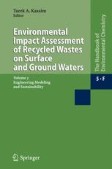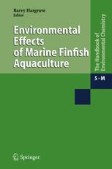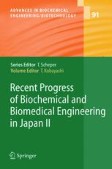Search
Search Results
-
Beneficial Reuses of Scrap Tires in Hydraulic Engineering
Scrap tires are a high-profile waste material. There are serious concerns over the ever-mounting scrap tire problem. A need exists for increasing...
-
Nonaqueous Phase Liquid Pool Dissolution in Subsurface Formations
The objective of this chapter is to present some recent developments on nonaqueous phase liquid (NAPL) pool dissolution in water saturated subsurface...
-
Mathematical Methods for Hydrologic Inversion: The Case of Pollution Source Identification
The reliable assessment of hazards or risks arising from groundwater contamination problems and the design of efficient and effective techniques to...
-
The Suitability of Electrode Measurements for Assessment of Benthic Organic Impact and Their use in a Management System for Marine Fish Farms
A management system for marine fish farms in Norway has recommended the use of simple electrode measurements of redox potentials (E...
-
Bioprocess Monitoring Using Near-Infrared Spectroscopy
Near-infrared spectroscopy (NIR) is a nondestructive analytical technique that has been used for simultaneous prediction of the concentrations of...
-
Metabolic Flux Analysis Based on 13C-Labeling Experiments and Integration of the Information with Gene and Protein Expression Patterns
The recent progress on metabolic systems engineering was reviewed, in particular focusing on the metabolic flux analysis (MFA) based on the...
-
Transgenic Birds for the Production of Recombinant Proteins
Transgenic birds were expected to be an excellent transgenic bioreactor for the production of recombinant pharmaceutical proteins. However, the only...
-
Pesticides in the Great Lakes
Pesticides have been widely and heavily used in agriculture in the Great Lakes Basin (approximately 93000 tons were used in 1995 alone). Herbicides...
-
Early Warning Strategies and Practices Along the River Rhine
In 1986, the International Commission for the Protection of the Rhine (ICPR) installed a Warning and Alarm Plan (WAP) in order to avert the dangers...
-
Degradation and Preservation of Organic Matter in Marine Sediments
Organic matter that is deposited in aquatic sediments is subject to an intense diagenetic reactor that determines how much organic carbon is...
-
Present Status of Antifouling Systems in Japan: Tributyltin Substitutes in Japan
An international conference held by the International Maritime Organization in October 2001 adopted an “International convention on the control of...
-
Assessment of Organic Compounds in the Rhine Estuary
Over the past centuries the Rhine estuary has changed from a natural, hardly disturbed estuary into an anthropogenetically influenced area that...
-
New Trends in Sample Preparation Methods for the Determination of Organotin Compounds in Marine Matrices
Tributyltin still remains a major issue for the marine environment and its determination is mandatory by legislation in several countries. As for...
-
Water Quality of Lake Constance
Lake Constance is used as a drinking water reservoir for about 5 million people. Because of its glacial origin from the Alps, the amount of...
-
Hydrology
The River Rhine is one of the major rivers of Europe -#8211; the only river that connects the Alps with the North Sea. It flows 1320 km from two...
-
Natural and Artificial Radioactivity in the Rhine and Its Tributaries
Presently, natural and artificial radioactivity in the Rhine River does not present a radiological hazard to the population. On the contrary, the...
-
Brominated Flame Retardants in the Great Lakes
Brominated flame retardants in the Great Lakes have not been as well studied as many of the polychlorinated pollutants, especially PCBs, but in the...
-
Development, Occurrence and Regulationof Antifouling Paint Biocides: Historical Review and Future Trends
Antifouling agents have been used on ships since the ancient Roman and Greek civilizations. A brief history is provided through to the demise of...
-
Antifouling Paint Booster Biocides: Occurrence and Partitioning in Water and Sediments
Following the ban on the use of tributyltin (TBT) in antifouling, several organic booster biocides have been used in conjunction with copper in...
-
Polychlorinated Biphenyls in the Great Lakes
This chapter reviews the scientific understanding of the concentrations, trends, and cycling of polychlorinated biphenyls (PCBs) in the Great...
